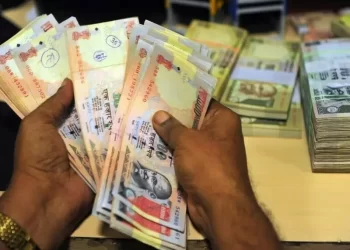- The deadline for the US to come to an agreement on the debt ceiling is looming.
- A default on the national debt would result in economic catastrophe, but even uncertainty ahead of the deadline could trigger an economic downfall.
- The 2011 debt ceiling debate is an example of a near miss that ended up briefly tanking the economy.
As the negotiations to raise the debt ceiling intensify, experts have warned of economic disasters that will result should the US default on its debts.
However, as the June 1 deadline nears, the anticipation itself could lead to economically disastrous consequences. And there is already precedent for this.
In 2011, a similar debt ceiling battle occurred: then-House Speaker John Boehner rallied Republicans behind a spending outline that would tie a debt-ceiling raise to spending cuts in labor, health, and education programs. After months of heated disagreement, a compromise was reached by lawmakers to raise the debt ceiling and implement spending cuts. A total catastrophe had been avoided, but the back-and-forth still rattled the economy.
According to a 2013 analysis by the US Department of Treasury, the prospect of a debt default resulted in a steep drop in stock prices as well as consumer confidence. Household wealth fell by $2.4 million that year, and taxpayers were forced to take on higher interest payments.
Standard & Poor’s also docked the US’s sovereign credit rating after the debt-ceiling deal was made, citing the negotiations as a sign that US “governance and policymaking” had become “less stable, less effective, and less predictable.” This also affected stock prices.
A similar situation could play out in the lead-up to the “X-date” — or the default deadline — experts told The New York Times. Randall S. Kroszner, a University of Chicago economist, told the Times, however, that economic pressures could play out differently in 2023 than they did in 2011 when the economy stood on more solid ground.
“2011 was a very different situation — we were in recovery mode from the global financial crisis,” Kroszner told the Times. “In the current situation, where there’s a lot of fragility in the banking system, you’re taking more of a risk. You’re piling up fragility on fragility.”
The most obvious result of financial chaos: Economic pressures could result in a surge in interest rates that drive up monthly payments on everything from student loans to credit cards.
However, experts told the Times that this is not happening yet, at least.
In late April, House Republicans passed Speaker Kevin McCarthy’s bill, the Limit, Grow, Save Act of 2023, which would raise the debt ceiling by $1.5 trillion while implementing $4.5 in spending cuts on programs like student loan forgiveness.
Earlier this month, a report from Moody’s Analytics found that Republicans’ proposed spending cuts could trigger “a recession in 2024, costing the economy 2.6 million jobs at the worst of the downturn and pushing unemployment to a peak of near 6%.”
And, like in 2011, Republicans and Democrats are at an intense standstill about raising the debt ceiling — with the US’s ability to borrow money to pay its current legal obligations (read: not new spending) again tied by the GOP to cuts to new spending.









